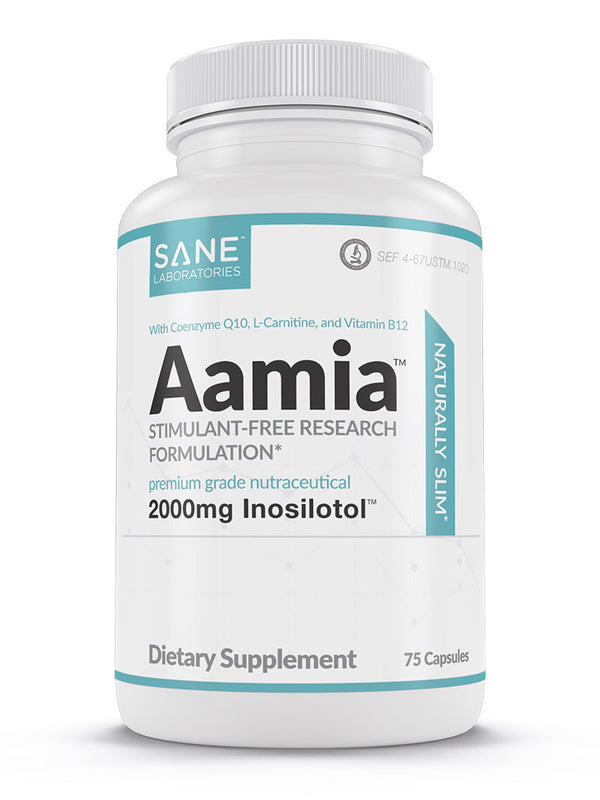Losing belly fat, especially that stubborn visceral fat, can feel like an uphill battle. It’s not just about how you look—carrying too much visceral fat around your waist is linked to serious health risks. Belly fat raises the risk of conditions such as cardiovascular disease, dementia, asthma, breast cancer, and colorectal cancer, regardless of overall weight. So, why is it so difficult to shed those extra pounds around the middle?
Click here to learn more about Luminae™ and to place your order now while supplies last!
There are several reasons why the body tends to store fat in the abdominal area, and it’s not just about what you eat. Factors like genetics, hormones, and lifestyle choices all play a role. As we age, our metabolism naturally slows down, making it harder to burn off excess fat. Hormonal changes, particularly for women, can also lead to more fat being stored around the belly. Add to that the impact of stress and poor sleep, which can elevate cortisol levels—a hormone that encourages fat accumulation in the abdominal region—and it’s easy to see why belly fat is so persistent.
The type of fat storage that accumulates in the abdominal area also makes a difference. Visceral fat, which surrounds your internal organs, is more metabolically active and tougher to lose than subcutaneous fat, which is located just under the skin. This kind of fat is closely linked to a higher risk of metabolic issues, making the journey to lose it even more challenging.
But here’s the good news: there are natural methods that can effectively target and reduce belly fat. In the sections ahead, we’ll explore practical and sustainable strategies to help you lose belly fat and keep it off for good. These methods focus on improving your overall health, boosting your metabolism, and making lifestyle changes that lead to lasting success.
Ready to discover these natural ways to tackle belly fat? Let’s dive into the strategies that can help you achieve a healthier, trimmer waistline and enhance your well-being.
Four Lifestyle Changes to Help Reduce Belly Fat and Keep It Off
While diet and exercise are key to losing belly fat, making some healthy lifestyle changes can significantly boost your weight loss efforts and help reduce visceral fat. A combination of regular exercise and a healthy diet is crucial for achieving results. These adjustments create a supportive environment for fat loss and overall well-being.
Here are four lifestyle changes that can help you shed belly fat and maintain a healthier waistline:
1. Prioritize Sleep
Getting quality sleep is crucial, not just for overall health but also for losing belly fat. Aim for 7-9 hours of sleep each night to give your body the time it needs to repair and rejuvenate. Poor sleep can disrupt the hormones that regulate hunger and fat storage, leading to increased belly fat and making weight loss feel slow or even impossible.
To improve your sleep quality, establish a regular sleep schedule and create a restful environment that encourages deep, uninterrupted sleep.
2. Reduce Stress
Chronic stress can lead to higher cortisol levels, a hormone that promotes fat storage, particularly in the belly area. Finding effective ways to manage stress can make a big difference in your ability to lose fat, especially around the waist. Techniques like deep breathing, mindfulness, and spending time in nature can help lower stress levels.
Incorporating these practices into your daily routine can help you create a calmer, more balanced lifestyle, making it easier to lose belly fat.
3. Limit Alcohol Intake
Alcohol can contribute to belly fat due to its high-calorie content and the way it impacts your metabolism. Cutting back on alcohol can help you avoid unnecessary calories and improve your body’s ability to burn fat. Instead of reaching for a drink, opt for water or other low-calorie beverages.
Moderation is key, so consider limiting alcohol to special occasions or social events to keep your calorie intake in check.
4. Stay Hydrated
Drinking enough water is essential for overall health and can aid in fat loss. Staying hydrated helps keep your metabolism running smoothly and supports your body’s natural detoxification processes. Aim to drink at least eight glasses of water a day, and even more if you’re physically active.
Keeping a water bottle handy can serve as a reminder to sip throughout the day and stay properly hydrated.

Five Diet Changes to Help Lose Belly Fat and Keep It Off
Diet plays a critical role in reducing belly fat and maintaining a healthy weight. Understanding your body fat percentage is crucial, as it helps you gauge how dietary changes can effectively reduce visceral fat. Making simple yet effective changes to your eating habits can have a significant impact on your waistline.
Here are five dietary adjustments to help you achieve and maintain a flatter belly:
1. Increase Protein Intake
Protein is essential for building lean muscle mass and boosting your metabolism, both of which can help reduce belly fat. Make sure to include high-quality sources of protein in your meals, such as lean meats, fish, eggs, and plant-based options like beans and lentils.
Protein also helps you feel fuller for longer, which can reduce the likelihood of overeating. Try to include a source of protein in every meal to support your fat-loss goals.
2. Choose Healthy Fats
Not all fats are created equal, and choosing healthy fats can actually help reduce belly fat. Focus on incorporating sources like avocados, nuts, seeds, and olive oil into your diet. The omega-3 fatty acids found in fish are particularly beneficial and can help reduce abdominal obesity.
These healthy fats not only keep you satisfied but also provide essential nutrients. Be sure to avoid trans fats and limit saturated fats, as these can contribute to abdominal fat storage.
3. Eat More Non-Starchy Vegetables
Non-starchy vegetables are low in calories and high in fiber, making them perfect for weight loss and reducing body fat. Fill your plate with a variety of colorful vegetables like spinach, broccoli, bell peppers, and cauliflower.
These veggies are packed with essential vitamins and minerals while helping you feel full. Aim to have at least half of your plate filled with non-starchy vegetables at each meal.
4. Limit Added Sugars
Excess sugar intake is linked to increased belly fat and other health issues. Cut back on added sugars by reducing your consumption of sugary drinks, desserts, and processed foods. Instead, opt for natural sweeteners like stevia or enjoy the natural sweetness of fruits like berries and citrus.
Always check food labels to avoid hidden sugars in your diet, which can sneak into foods you might not expect.
5. Opt for Fiber-Rich Foods
Fiber is crucial for digestion and can help reduce belly fat by keeping you full and regulating blood sugar levels. Include fiber-rich foods like leafy greens, berries, flaxseeds, and nuts in your diet. Fiber also promotes a healthy gut, which is essential for overall well-being and weight management.
Aim to meet your daily fiber needs through whole, unprocessed foods to support your fat-loss journey.
Four Activity Changes to Help Lose Belly Fat and Keep It Off
Incorporating the right types of physical activity into your routine can significantly boost your efforts to lose belly fat. Exercise not only burns calories but also revs up your metabolism and improves your overall health. Additionally, regular exercise can help reduce more visceral fat, which is metabolized more easily compared to other body fat types.
Here are four effective activity changes to help you achieve a flatter belly:
1. Include High-Intensity Interval Training (HIIT)
High-intensity interval training (HIIT) involves short bursts of intense exercise followed by periods of rest or lower-intensity movement. This type of workout is especially effective for burning belly fat. HIIT not only boosts your metabolism but also helps you burn more calories even after you’ve finished your workout.
Try adding HIIT workouts to your routine a few times a week for optimal results.
2. Practice Strength Training
Strength training is key for building muscle, which in turn increases your metabolic rate and helps with fat loss. Focus on exercises that target multiple muscle groups, such as squats, deadlifts, and bench presses. Because muscle tissue burns more calories at rest than fat tissue, strength training can be a powerful tool for reducing belly fat.
Aim to include strength training sessions in your routine at least two to three times a week.
3. Add Core-Focused Exercises
While it’s true that you can’t spot-reduce fat, strengthening your core can improve your posture and make your abdominal muscles more defined as you lose overall body fat. Incorporate exercises like planks, leg raises, and bicycle crunches into your workouts to target the muscles in your abdomen.
Regularly working on your core can also enhance your overall stability and balance.
4. Stay Active Throughout the Day
Beyond your structured workouts, staying active throughout the day can help increase your calorie burn and support fat loss. Simple activities like taking the stairs, walking during breaks, and doing household chores can add up over time. Try to move around every hour, even if it’s just for a few minutes.
Maintaining an active lifestyle complements your exercise routine and can help you achieve your belly fat loss goals.
Frequently Asked Questions About Metabolic Health
Understanding metabolic health is essential for keeping up your overall well-being and hitting those long-term weight management goals. Metabolic health, in a nutshell, is all about how well your body generates and uses energy, which affects everything from your weight and mood to your risk for various diseases. Understanding visceral belly fat is also crucial, as it plays a significant role in metabolic health due to its unique metabolic properties and the factors that contribute to its accumulation.
Let’s dive into five frequently asked questions about metabolic health to give you a better handle on this vital topic:
Q1: What is metabolic health?
Metabolic health is basically how well your body keeps its blood sugar, lipids, and insulin levels in check, along with maintaining a healthy weight. It’s about ensuring that your body’s metabolic processes—like converting food into energy—are running smoothly.
When your metabolic health is in good shape, you’re less likely to develop chronic conditions like diabetes, heart disease, or high blood pressure. Plus, good metabolic health means you’ll probably feel more energetic, have a better mood, and just generally feel more “in the zone” in your day-to-day life.
Q2: How can I improve my metabolic health?
The good news? Improving your metabolic health is definitely within reach. It involves a mix of eating well, staying active, and getting enough rest. Think about filling your plate with non-starchy veggies, lean proteins, and healthy fats while cutting back on processed foods and sugars.
Regular exercise, especially strength training and cardio, can really give your metabolism a boost. And don’t forget about sleep—aiming for 7-9 hours of good quality shut-eye each night is key to keeping your metabolism on track.
Q3: What are the signs of poor metabolic health?
Signs that your metabolic health might need some attention can include things like always feeling tired, struggling to lose weight, high blood pressure, and elevated blood sugar or cholesterol levels.
You might also notice frequent cravings for sugary snacks, more fat around your belly, and difficulty managing stress. If any of this sounds familiar, it might be time to check in with a healthcare professional who can give you a full evaluation and help guide you toward improving your metabolic health.
Q4: How does stress affect visceral fat and metabolic health?
Stress and metabolic health don’t mix well. Chronic stress can send your cortisol levels sky-high, which can lead to higher blood sugar levels and more fat storage, especially around your middle.
High cortisol levels can also make it harder for your body to use glucose effectively, leading to insulin resistance. Learning how to manage stress—through mindfulness, deep breathing, or just taking a walk in the fresh air—can help keep your cortisol levels in check and support better metabolic health.
Q5: Can poor metabolic health be reversed?
Absolutely. Poor metabolic health isn’t a life sentence. With some lifestyle changes, you can often turn things around. This means eating better, exercising regularly, managing stress, and making sure you’re getting enough sleep.
Consistency is the name of the game here. If you stick with these healthy habits, you can improve your metabolic health over time. And if you’re dealing with more serious issues, teaming up with a healthcare provider can help you create a personalized plan to get your metabolism back on track.
Conclusion
Improving your metabolic health and losing belly fat isn’t just about making one or two changes—it’s about adopting a more mindful approach to how you live. By prioritizing sleep, managing stress, eating more protein, and staying active, you’re setting yourself up for success.
These changes can help you not only lose weight but also feel better in your day-to-day life. Don’t keep these tips to yourself—share them with friends and family, whether through social media or a quick email, to help them on their journey to better health too.
Transform Your Weight Loss Journey withLuminae™– Order Now!
Ready to take the next step? Luminae™ supplements could be just what you need to boost your metabolism, lose weight, and reduce belly fat. Many have already discovered the benefits of this innovative supplement, which is packed with natural ingredients and backed by science. Don’t miss out—take control of your weight loss journey today with Luminae™.
Click here to learn more about Luminae™ and to place your order now while supplies last!
































